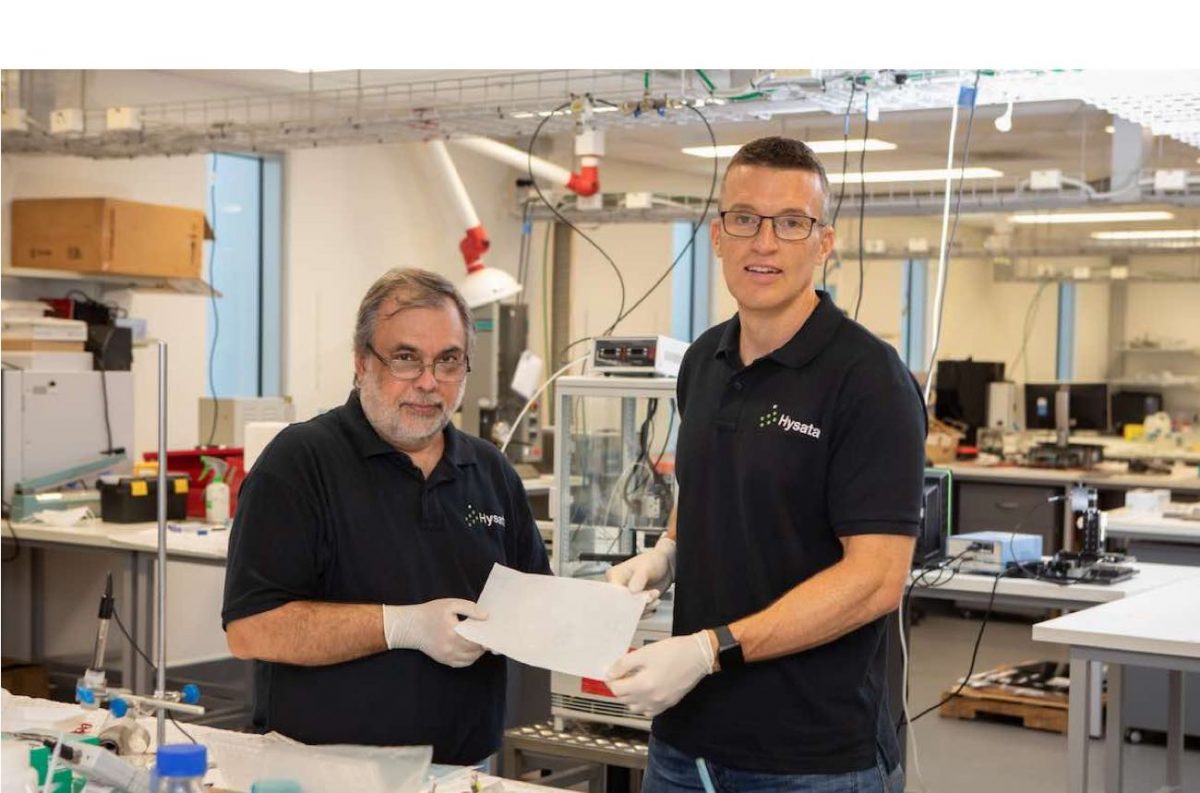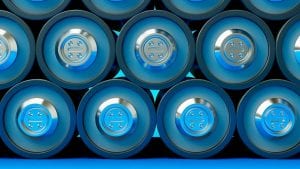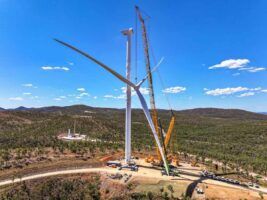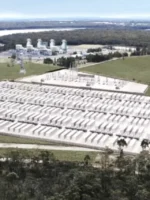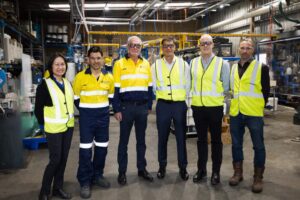An Australian start-up spun out of the University of Wollongong has claimed a major new breakthrough that promises to enable renewable hydrogen production of around $A2.00 per kilogram by the mid-2020s – out-competing fossil fuel-derived hydrogen.
Hysata, launched just last year out of UOW’s Australian Institute for Innovative Materials (AIIM), said on Wednesday that the breakthrough had put the company on a clear path to commercialise the world’s most efficient electrolyser, and to reach giga-scale green hydrogen production by 2025.
As RenewEconomy has previously reported, Hysata was formed to commercialise the promising electrolyser technology developed by a heavy-hitting team at the UOW’s ARC Centre of Excellence for Electromaterials Science, led by Professor Gerry Swiegers.
The company’s launch in June 2021 was backed by $5 million in seed funding led by IP Group, with support from the Clean Energy Finance Corporation (CEFC), the green bank’s first ever investment in hydrogen-related technology.
In a report published this week in Nature Communications, the team behind Hysata’s “capillary-fed electrolysis” (CFE) cell technology, said they had used it successfully to produce green hydrogen from water at 98% cell energy efficiency – a level well above the International Renewable Energy Agency’s 2050 target.
As the researchers explain, the evolution of electrolysers has been about reducing resistance to increase efficiency. To this end, the team’s CFE cell completely eliminates bubbles – one of the biggest remaining drags on efficiency – making it the highest performing cell globally.
This latest breakthrough not only elevates the Australian-made electrolyser’s productivity to well above IRENA 2050 target and significantly ahead of competing technologies, but it puts Hysata firmly at the front of the global race to the production of renewable hydrogen at scale.
“The global momentum towards net zero is creating a massive opportunity for green hydrogen and electrolysers,” said Hysata CEO Paul Barrett in a statement on Wednesday.
“Economics will ultimately determine which technologies win, and with our world-beating efficiency, Hysata is well placed to lead in this major new global market.
“Our electrolyser will deliver the world’s lowest hydrogen cost, save hydrogen producers billions of dollars in electricity costs, and enable green hydrogen to outcompete fossil fuel-derived hydrogen.
“Our technology will enable hydrogen production of below US$1.50/kg per kilogram by the mid-2020s, meeting Australian and global cost targets much earlier than generally expected. This is critical to making green hydrogen commercially viable and decarbonising hard-to-abate sectors,” Barrett said.
Professor Swiegers, who is also chief technology officer at Hysata, said that while electrolysers had been around for 200 years, the stubbournly high cost of renewable hydrogen production using electrolysis had prevented large-scale uptake.
“Hysata’s overall electrolyser system has been designed for ease of manufacturing, scaling and installation, delivering 95 percent overall system efficiency, equivalent to 41.5 kWh/kg, compared to 75 percent or less for existing electrolyser technologies,” he said.
“For hydrogen producers, this will significantly reduce both the capital and operational costs to produce green hydrogen.
“Hysata is proud to be at the forefront of this technology innovation and introducing an entirely new category of electrolyser that is as monumental as the shift from the internal combustion engine to electric motors.”
ACES director Professor Gordon Wallace said the new discovery was a testament to work built upon over a long time, and based on many years of thorough fundamental scientific explorations. But he said the company would need further support to realise the technology’s potential.
“This is indeed an exciting breakthrough with Hysata,” Professor Wallace said. “We are also aware that our next exciting breakthroughs depend on continued investment in fundamental research.”

